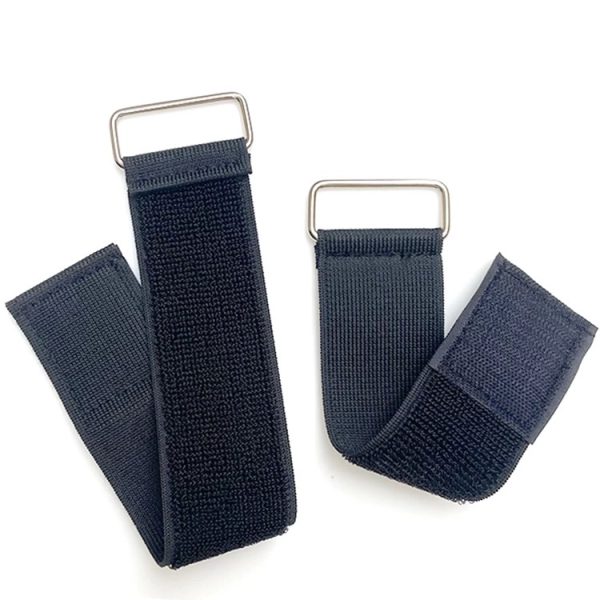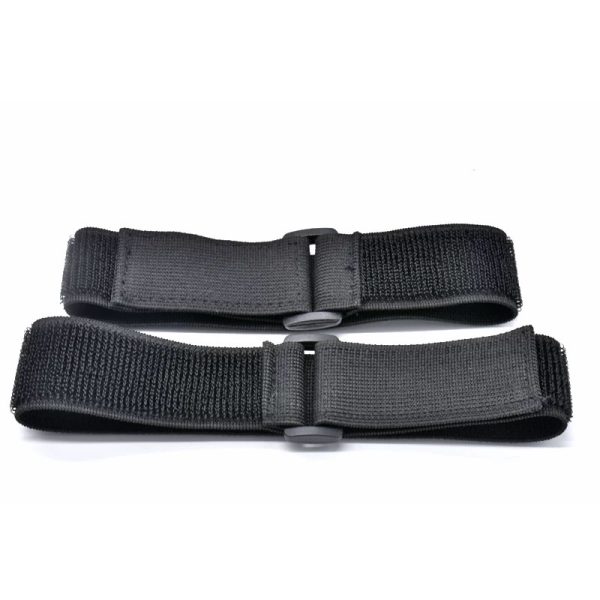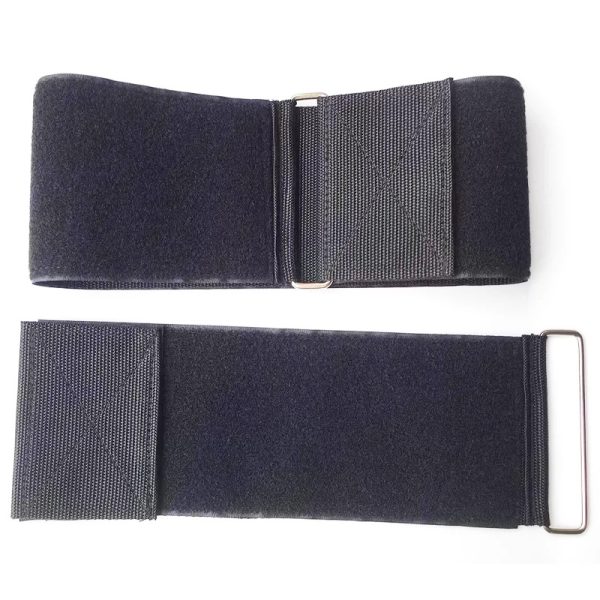Outdoor products require fastening solutions that withstand UV exposure, temperature extremes, moisture, and repeated use. Engineers and product developers must balance durability with functionality when selecting attachment methods. As custom webbing manufacturers, we create specialized hook and loop fastening systems tailored to your specific outdoor application needs.
Outdoor fastener straps are specialized textile-based attachment systems designed to secure equipment and materials in challenging exterior environments. These engineered solutions combine weather-resistant materials with mechanical attachment mechanisms to provide reliable connections that withstand harsh conditions while allowing for adjustable tension and repeated use without degradation.
Learn why hook and loop fasteners excel outdoors, from marine to solar. Get expert tips to choose the best materials and configurations for your needs.


Webbing manufacturing expert with 15+ years of experience helping product developers build high-performance straps for industrial, medical, and outdoor use.
Hook and loop fasteners are ideal for outdoor use because they offer adjustable tension, weather resistance, and reusable attachment without tools. These versatile fastening solutions provide secure connections while allowing for quick release, making them superior alternatives to traditional fasteners in applications requiring frequent access or adjustment in challenging outdoor environments.
Key Benefits at a Glance:
Common applications include solar panel cable management, outdoor enclosures, boat covers, awnings, field kits, and modular camping gear.
Premium outdoor-rated hook and loop fasteners incorporate UV-stabilized nylon that retains 85-90% of tensile strength after 1000 hours of accelerated UV exposure, significantly outperforming indoor-grade alternatives. Their specialized additives prevent brittleness and maintain flexibility across extreme temperatures, ensuring dependable performance regardless of seasonal or geographical variations.
Water-resistant versions feature hydrophobic treatments that maintain approximately 75-80% of original shear strength even after prolonged exposure to humid conditions, making them suitable for marine environments and outdoor fixtures subject to precipitation. Their installation flexibility enables secure fastening on virtually any surface without compromising structural integrity.
Hook and loop fasteners outperform traditional outdoor fasteners through superior vibration resistance, easier adjustability, and elimination of surface damage. Unlike metal fasteners that can corrode or plastic snaps that become brittle, quality hook and loop systems maintain functionality across temperature extremes while providing reliable holding power without creating stress points in the attached materials.
Comparison at a Glance:
Common replacements include substituting hook and loop for metal screws in access panels, zippers in outdoor covers, and snaps in equipment attachments where frequent access is required.
While traditional fasteners concentrate stress at specific points, hook and loop systems distribute tension across their entire attachment area, reducing material fatigue risk by up to 70%. They accommodate thermal expansion and contraction, preventing warping or buckling during temperature fluctuations, and maintain 85% of original holding power after 1000 hours of vibrational stress testing.
Installation efficiency further distinguishes hook and loop from conventional fasteners, reducing assembly time by approximately 40-60% compared to traditional mechanical fasteners by eliminating precise hole alignment requirements and specialized installation tools.
Yes, premium hook and loop fasteners can withstand extreme weather conditions when properly specified for outdoor applications. High-performance outdoor-grade hook and loop materials withstand temperature ranges from -40°F to 200°F (-40°C to 93°C), resist UV degradation, and maintain functionality through precipitation, saltwater exposure, and high humidity environments.
Weather Resistance at a Glance:
Applications in extreme environments include arctic expedition equipment, desert monitoring stations, tropical marine deployments, and high-altitude research installations.
UV-stabilized outdoor versions maintain structural integrity for 3-5 years of continuous sun exposure, while standard indoor-grade materials typically degrade within 3-6 months. Premium outdoor hook and loop maintains approximately 80-85% of room-temperature strength at -40°F and 75-80% at 200°F, providing reliable performance across global climate zones.
Outdoor-grade versions with hydrophobic treatments maintain 75-80% of their dry strength even after prolonged water exposure, while marine-grade variants incorporate anti-corrosion elements that prevent degradation from saltwater. Desert-optimized hook and loop uses modified hook geometries that resist sand accumulation while maintaining effective engagement with loop materials.
Yes, specialized marine-grade hook and loop fasteners function effectively underwater when designed with hydrophobic materials and corrosion-resistant backings. These advanced fastening systems maintain approximately 60-75% of their dry strength when submerged, depending on depth, water chemistry, and pressure conditions.
Underwater Performance at a Glance:
Common underwater applications include dive equipment attachments, underwater camera mounting, marine research equipment, aquatic habitat monitoring systems, and submersible maintenance access panels.
Specialized pool-grade versions incorporate chemical-resistant polymers that withstand chlorinated environments, while marine-grade variants include salt-resistant components for oceanic applications. Deep-water hook and loop materials feature reinforced structures that maintain approximately 65% of their surface-level holding power at depths of 100 feet (30 meters).
While adhesive-backed systems often fail underwater, sewn or mechanically anchored systems with double-stitched attachment patterns and marine-grade thread provide reliable performance. Even high-performance marine-grade hook and loop typically requires replacement after approximately 500 submersion cycles, compared to 5,000+ fastening cycles in dry applications.

High-quality outdoor hook and loop fasteners last 3-5 years under normal outdoor conditions when properly specified and installed. Premium UV-stabilized materials significantly outlast standard indoor-grade alternatives, which typically fail within 6-12 months of outdoor exposure.
Longevity Factors at a Glance:
Applications requiring maximum lifespan include permanent outdoor installations, equipment with limited maintenance access, remote monitoring stations, and infrastructure applications.
Industrial-grade hook and loop with UV stabilization typically maintains acceptable performance for 3-5 years in full outdoor exposure, while commercial-grade materials generally provide 1-3 years of reliable service. Premium outdoor-grade materials maintain approximately 50% of their original holding power after 5,000 open/close cycles and 75-80% after 1,000 cycles.
Sewn attachment typically provides the longest service life, followed by mechanical anchoring and adhesive bonding. Environmental contaminants can reduce service life by 50-70%, though specialized chemical-resistant formulations offer improved performance. Regular cleaning to remove accumulated particulates can improve longevity by 30-40% in dirty environments.
Industrial-grade outdoor hook and loop fasteners can support 5-15 pounds per square inch of shear load and 1-3 pounds per square inch of tensile load, depending on material quality and attachment method. These holding capacities enable hook and loop systems to secure significant loads when properly sized.
Load Capacity at a Glance:
Common load-bearing applications include equipment mounting, cable management for heavy bundles, temporary structural connections, and security attachments for transportation.
Shear strength (parallel to the attachment surface) typically exceeds tensile strength (perpendicular pulling) by a factor of 3-5. Premium industrial grades can maintain 10-15 pounds per square inch when properly installed, while standard commercial grades support 3-5 pounds per square inch in shear.
At 0°F (-18°C), hook and loop materials demonstrate approximately 80% of their room-temperature holding power, dropping to 60-65% at 150°F (65°C). Sewn installation using reinforced stitching patterns typically supports the highest loads, while adhesive attachment generally supports 60-70% of what identical sewn systems can maintain.
Properly designed systems with distributed hook and loop patches support higher total loads than single large attachments of equivalent area. Industry standard practice recommends safety factors of 3:1 for load-bearing applications to ensure reliable performance despite variable conditions.
Hook and loop fasteners excel in outdoor applications including solar panel mounting, marine coverings, agricultural equipment, emergency shelters, and outdoor signage systems. These versatile fastening solutions solve unique outdoor challenges through their ability to accommodate movement, withstand environmental extremes, and provide access without permanent modification.
Successful Applications at a Glance:
The solar energy industry uses specialized hook and loop systems for non-penetrating panel attachment and cable management, reducing installation time by 30-40% while maintaining superior wind resistance. Marine applications provide secure yet accessible closures for boat covers and equipment, with approximately 65-70% of modern recreational boats incorporating hook and loop in their cover systems.
Emergency management organizations adopt hook and loop for modular shelter systems that deploy 60% faster than traditional methods. Outdoor advertising installations using hook and loop report 75% fewer wind failures compared to grommet-based systems by distributing wind loads across the entire attachment surface rather than concentrating stress at isolated points.

Industries utilizing custom hook and loop outdoor solutions include aerospace, military/defense, architectural design, transportation, renewable energy, and outdoor recreation equipment manufacturers. These sectors leverage customized fastening systems with specialized performance characteristics including extreme temperature resistance, enhanced holding power, and application-specific geometries.
Key Industry Applications at a Glance:
Aerospace utilizes ultra-lightweight custom hook and loop systems weighing 30-40% less than commercial alternatives for maintenance panels and removable insulation. Military applications incorporate specialized formulations with infrared signature reduction and enhanced resistance to field contaminants.
Architectural applications use customized exterior-grade hook and loop for modular façade elements with adhesive systems providing 40-50% stronger holding power than standard construction adhesives. Transportation applications employ vibration-resistant formulations with enhanced mechanical interlocking that demonstrates 60-70% better vibration resistance than standard configurations.
Renewable energy manufacturers utilize custom solutions with 7+ year outdoor lifespans for non-penetrating mounting systems that preserve warranty integrity on building envelopes. Outdoor recreation equipment incorporates quick-release safety applications with emergency release mechanisms that operate under specific force thresholds while maintaining secure attachment during normal use.
Premium outdoor hook and loop fasteners provide durable, adjustable connections in challenging environments where traditional fasteners fail. Their versatility across industries demonstrates their superior performance in extreme conditions. Contact us to explore custom manufacturing solutions tailored to your product requirements with specialized materials, configurations, and performance characteristics.
Yes, eco-friendly outdoor hook and loop fasteners made from recycled polyester and bio-based nylons are available. These sustainable alternatives offer approximately 70-80% of the performance of standard materials while reducing environmental impact and meeting regulatory requirements for green building certifications.
Fiberglass, vinyl, polyester fabrics, powder-coated metals, and properly prepared composite surfaces work best with outdoor hook and loop fasteners. Porous materials like wood require specialized adhesive primers, while silicone and some plasticized materials may need mechanical attachment rather than adhesive bonding.
Temperature extremes reduce hook and loop performance by 15-40% from optimal conditions. At -40°F, fasteners become stiffer with 80% of room-temperature strength. At 150°F, they lose approximately 35% of holding power due to polymer softening. Premium grades designed for outdoor use minimize these performance reductions.
Outdoor hook and loop fasteners are limited by finite lifespan (3-5 years maximum), reduced holding power when contaminated with fine particulates, diminished performance under constant heavy loads, and higher initial cost compared to mechanical fasteners. They are not recommended for safety-critical structural applications without redundant securing methods.
Maintain outdoor hook and loop fasteners by regularly cleaning with mild soap and water, avoiding petroleum-based cleaners, ensuring complete drying before reattachment, and inspecting for UV damage. Annual application of silicone-based protectants can extend lifespan by up to 30% in high-UV environments.
Yes, custom hook and loop solutions can be manufactured with specialized backings, adhesives formulated for specific substrates, modified hook geometries for enhanced holding power, and unique performance characteristics. Custom solutions include varied widths, proprietary attachment systems, and application-specific material formulations for specialized industry requirements.